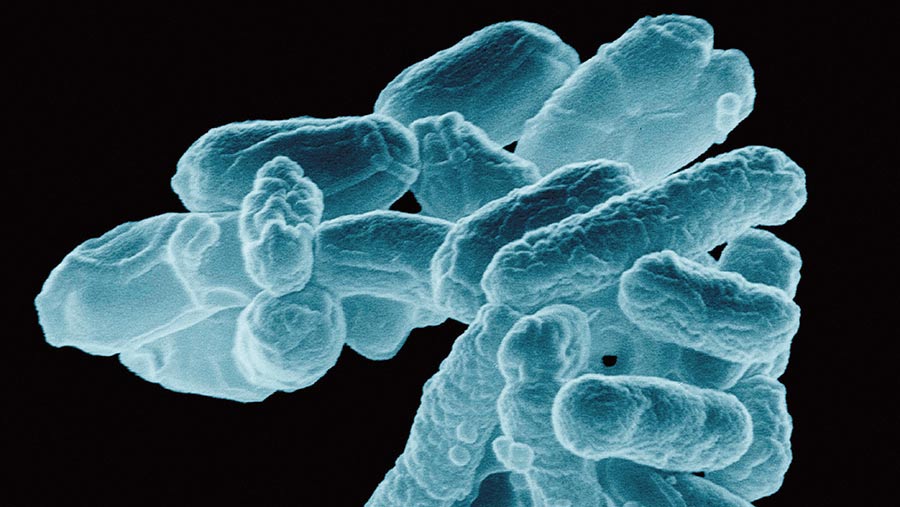Mastitis-causing E coli shows antibiotics resistance
 © Cultura/REX/Shutterstock
© Cultura/REX/Shutterstock Mastitis-causing E coli pathogens are showing the most resistance to routinely used antibiotics, milk analysis by a Devon veterinary group has shown.
The Vale Veterinary Group’s laboratory conducted bacteriology tests on 15,194 milk samples between 2014 and 2016. The samples were from cases of clinical mastitis and cows with high somatic cell counts and analysis looked at the most commonly isolated pathogens in the milk and how sensitive to antibiotics they were.
Vale Veterinary Group vet and director Andy Biggs, addressing delegates at the British Mastitis Conference on 15 November, said mastitis treatment needs to be targeted and the necessity of antibiotics must be assessed before they are used.
“As long as we are thinking about not using antibiotics when we don’t need it, we are heading in the right direction,” Mr Biggs said.
“What we really need is a real cow-side [culture] test that is rapid enough to make a decision about treatment.”
See also: Handheld mastitis device speeds up diagnosis
The results
Environmental pathogens Streptococcus uberis and E coli were the most commonly found bacteria.
Antibiograms, conducted on 15.9% of the samples, showed S uberis isolates were sensitive to most antimicrobials used to treat mastitis and most S aureus isolates (95%) were sensitive to penicillin, with 4% showing intermediate sensitivity and 0.9% showing resistance.
However, E coli showed more resistance to routine antibiotics:
- Ampicillin: 58% sensitive, 10% intermediate, 31% resistant
- Amoxicillin/Clavulanic acid: 75% sensitive, 11% intermediate and 14% resistant
In light of the antibiotics resistance challenge and sector-specific targets set, Mr Biggs raised the importance of disease prevention and other first-line treatments – such as non-steroidal anti-inflammatory drugs – before antibiotics are administered.
This highlights the need for farmers to manage the cleanliness of cows, housing and parlour to minimise the presence and spread of environmental pathogens.
The antibiotic resistance of mastitis pathogens |
||||||
|
S uberis (% resistant) 1,007 samples |
E coli (% resistant) 829 samples |
S aureus (% resistant) 224 samples |
||||
|
Intermediate |
Resistant |
Intermediate |
Resistant |
Intermediate |
Resistant |
|
|
P |
0.2 |
0 |
4 |
0.9 |
||
|
AMP |
0 |
0.2 |
10.4 |
31.1 |
3.6 |
1.3 |
|
AMC |
0 |
0.1 |
11.1 |
14.1 |
0.9 |
0 |
|
N |
2.2 |
35.5 |
5.8 |
0.7 |
1.3 |
0 |
|
NV |
9.8 |
1.1 |
0.9 |
1.3 |
||
|
OB |
1.8 |
4 |
||||
|
TY |
2.5 |
1.2 |
0 |
0.9 |
||
|
CEQ |
0.8 |
0.2 |
1.2 |
1.4 |
||
|
OT |
4.1 |
14 |
||||
|
SH |
4.7 |
13.1 |
||||
|
SXT |
4 |
13.3 |
||||
|
Key: P – penicillin, AMP – Ampicillin, AMC – Amoxycillin/Clavulanic acid, N – Neomycin, NV – Novobiocin, OB – Cloxacillin, TY –Tylosin, CEQ – Cefquinome, OT – Oxytetracycline, SH – Spectinomycin, SXT – Co-trimoxazole |
||||||
